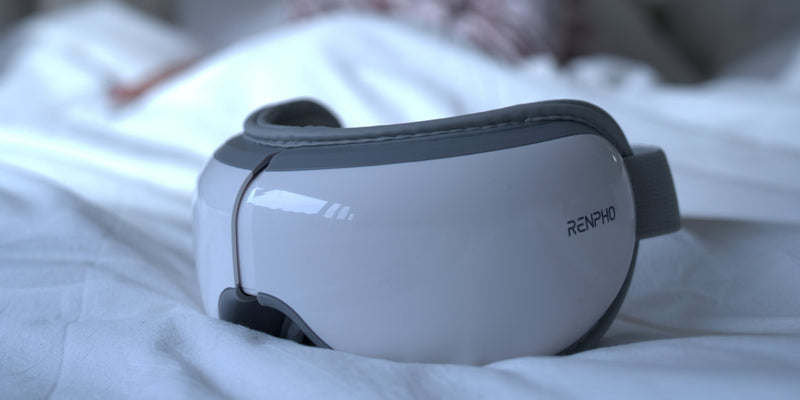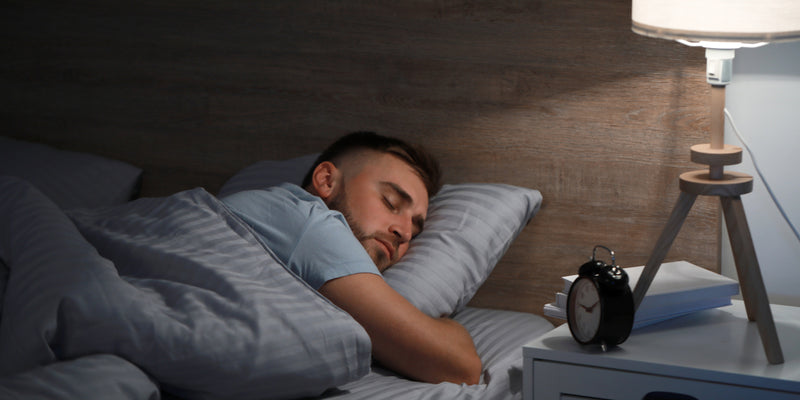Finding ways to enhance productivity has become a top priority for many individuals who lead busy lives. From juggling multiple tasks to managing tight deadlines, the quest for increased efficiency seems never-ending. Amidst this pursuit, one often overlooked yet incredibly effective technique holds the potential to revolutionize our productivity levels: the power nap.
A power nap, a short burst of sleep taken during the day, has gained recognition as a powerful tool for rejuvenation and enhancing cognitive performance. Countless studies have highlighted its ability to boost alertness, memory retention, creativity, and overall mental well-being. However, there's a crucial question that arises when it comes to harnessing the full potential of a power nap: How long should it be to achieve maximum effectiveness?
Finding the optimal duration for a power nap is a subject of great interest. While some advocate for short and snappy naps, others believe in longer durations to reap the benefits fully.
So, whether you're a student looking to improve your study sessions or a professional seeking to enhance your work performance, understanding the ideal duration for a power nap can be a game-changer. Let’s discover the secrets to unlocking your full potential through the perfect power nap.
What Are Sleep Cycles?

Sleep cycles are an essential aspect of our daily lives, determining the quality and duration of our rest. These cycles consist of different stages that our bodies go through as we sleep, each with distinct characteristics and functions. Understanding sleep cycles can provide valuable insight into the importance of restful sleep and help improve our overall well-being. From the initial stage of drowsiness to the deep and restorative phases, these cycles play a vital role in maintaining our physical health, mental clarity, and emotional stability. By analyzing the intricacies of sleep cycles, we can develop strategies to optimize sleep patterns and enhance our daily functioning. Exploring the science behind sleep cycles ultimately allows us to harness the power of sleep and unlock its countless benefits.
What Are Circadian Rhythms?
Circadian rhythms are important biological processes that regulate the sleep-wake cycle of an organism. These rhythms are based on an internal clock that operates on a 24-hour cycle and helps synchronize various physiological and behavioral functions with the Earth's rotation.
The internal clock, located in the suprachiasmatic nucleus (SCN) of the brain, receives information about the external environment, primarily through light and temperature cues. These cues help regulate the timing of sleep and wakefulness by influencing the release of hormones such as melatonin and cortisol.
Light is a powerful cue for regulating circadian rhythms. Exposure to bright light in the morning helps promote wakefulness and alertness, while exposure to dim or no light in the evening signals the body to produce melatonin, a hormone that promotes sleep. This is why it is important to limit exposure to bright lights, particularly from electronic devices, before bed, as it can disrupt the natural release of melatonin and make it difficult to fall asleep.
Temperature is another external factor that influences circadian rhythms. The body's temperature naturally fluctuates throughout the day, with a peak in the late afternoon and a dip in the early morning. This temperature fluctuation helps regulate sleep by promoting sleepiness in the evening and wakefulness in the morning.
Why Is It Essential to Nap for Productivity?

Productivity has become a key factor in accomplishing daily tasks and achieving goals. However, with busy schedules and increasing demands, individuals often find themselves exhausted and drained, hindering their ability to perform at their best. In such circumstances, napping has emerged as a popular and effective strategy to boost productivity and revitalize the mind and body. While it may seem counterintuitive to take a break and rest during the day, napping has been proven to have numerous benefits, both for our physical health and cognitive performance. By understanding why it is essential to nap for productivity, individuals can harness the power of a short snooze to enhance their overall efficiency and well-being.
What Are the Benefits of Napping?
Napping has numerous benefits when it comes to enhancing memory retention, cognitive functions, and overall health. Research has shown that a quick nap can significantly improve short-term memory by allowing the brain to consolidate newly acquired information. When we sleep, our brain categorizes and stores memories, helping us recall them later. Napping can also enhance cognitive functions, including visual-spatial processing and decision-making. This is because a nap helps to clear the mind and rejuvenate cognitive abilities, resulting in improved focus and problem-solving skills.
In addition to its cognitive benefits, napping positively impacts our overall health. Taking regular naps has been linked to reduced stress levels, lower blood pressure, and a strengthened immune system. Napping can also help to increase alertness and productivity, particularly when one is feeling fatigued or sleep deprived.
However, it is important to consider the timing for napping. Napping too late in the day, especially in the evening or close to bedtime, can interfere with nighttime sleep. This can lead to difficulties falling asleep and disrupted sleep patterns, which can have negative effects on overall health and cognitive functioning.
When Is the Best Time to Nap That Aligns with Your Natural Body Clock?

The best time to nap that aligns with your natural body clock can vary among individuals, depending on factors such as their sleep schedule and age. However, there are some general guidelines that can be followed to determine optimal nap timing.
The natural body clock, also known as the circadian rhythm, plays a crucial role in regulating our sleep and wake cycles. It is influenced by individual factors, such as genetics and lifestyle habits. For most people, the ideal time to nap is in the early afternoon, typically between 1 p.m. and 3 p.m. This is because our body temperature tends to drop slightly during this time, which promotes feelings of drowsiness and helps us fall asleep faster.
Napping early in the afternoon can provide various benefits. It can help alleviate midday fatigue, improve mood, and enhance cognitive function. It also allows individuals to take advantage of the natural dip in alertness that occurs after lunch, keeping them refreshed and energized for the remainder of the day.
On the other hand, napping after 3 p.m. is generally discouraged as it can interfere with nighttime sleep. Taking a nap too late in the day can disrupt the circadian rhythm, making it harder to fall asleep at night and potentially leading to insomnia. It is important to avoid napping too close to bedtime to ensure a good night's sleep.
How Long Should I Nap For?

The length of your nap can greatly affect the outcomes you desire. Different nap lengths can cater to different goals, but it's important to be mindful of the potential consequences of napping for too short or too long.
For those seeking a quick rejuvenation, a 10- to 20-minute nap is highly recommended. This short power nap helps to boost alertness and enhance cognitive performance. It provides a quick burst of energy and revitalizes the mind without leaving you feeling groggy. However, if you extend your nap to around 30 minutes, you may experience some grogginess upon waking. This is known as sleep inertia, where you may feel disoriented and struggle to transition back to a fully awake state.
Alternatively, for individuals in need of extended rest, a 90-minute nap can be incredibly beneficial. This length allows you to go through a complete sleep cycle, including all the stages of restorative rest. A 90-minute nap can enhance creativity, improve memory consolidation, and aid in problem-solving skills.
It's essential to pay attention to the length of your nap to achieve your desired outcome. Napping for too short may not provide enough rejuvenation, while napping for too long may leave you feeling groggy and disoriented. So, choose your nap lengths wisely to maximize the benefits and avoid potential consequences.
Takeaway
The quest for increased productivity has led many individuals with busy lives to seek ways to enhance their efficiency. One effective technique that is often overlooked is the power nap. Taking a short burst of sleep during the day has been recognized for its ability to rejuvenate the mind and body, boost cognitive performance, and improve overall well-being. While the optimal duration for a power nap varies, a 10- to 20-minute nap is recommended for a quick rejuvenation and increased alertness, while a 90-minute nap can provide a complete sleep cycle and enhance creativity and memory consolidation. Understanding sleep cycles and aligning napping with the natural body clock can further optimize the benefits. By incorporating strategic napping into daily routines, individuals can unlock their full potential and maximize productivity.
Renpho Health Tips
-

Embrace the Season: Discover the Magic of Autumn Essential Oils
April 8, 2024
Read more >
-

Unveiling the Relief: Eye Massagers as a Headache Healer
March 21, 2024
Read more >
-

The Connection Between Massage Guns and Better Sleep
May 23, 2023
Read more >
-

5 Self-Care Practices for a Healthier Mind
May 10, 2023
Read more >
-

A Guide to the Best Gift Ideas This Mother’s Day
May 11, 2023
Read more >

